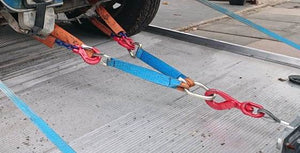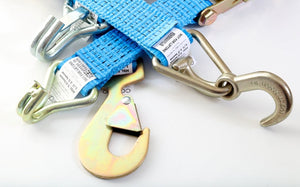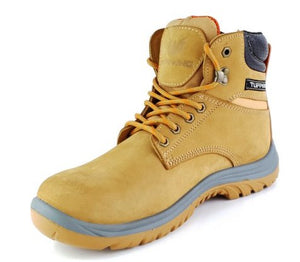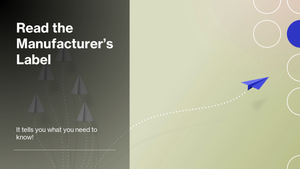Polyester Webbing Straps for Load Restraint
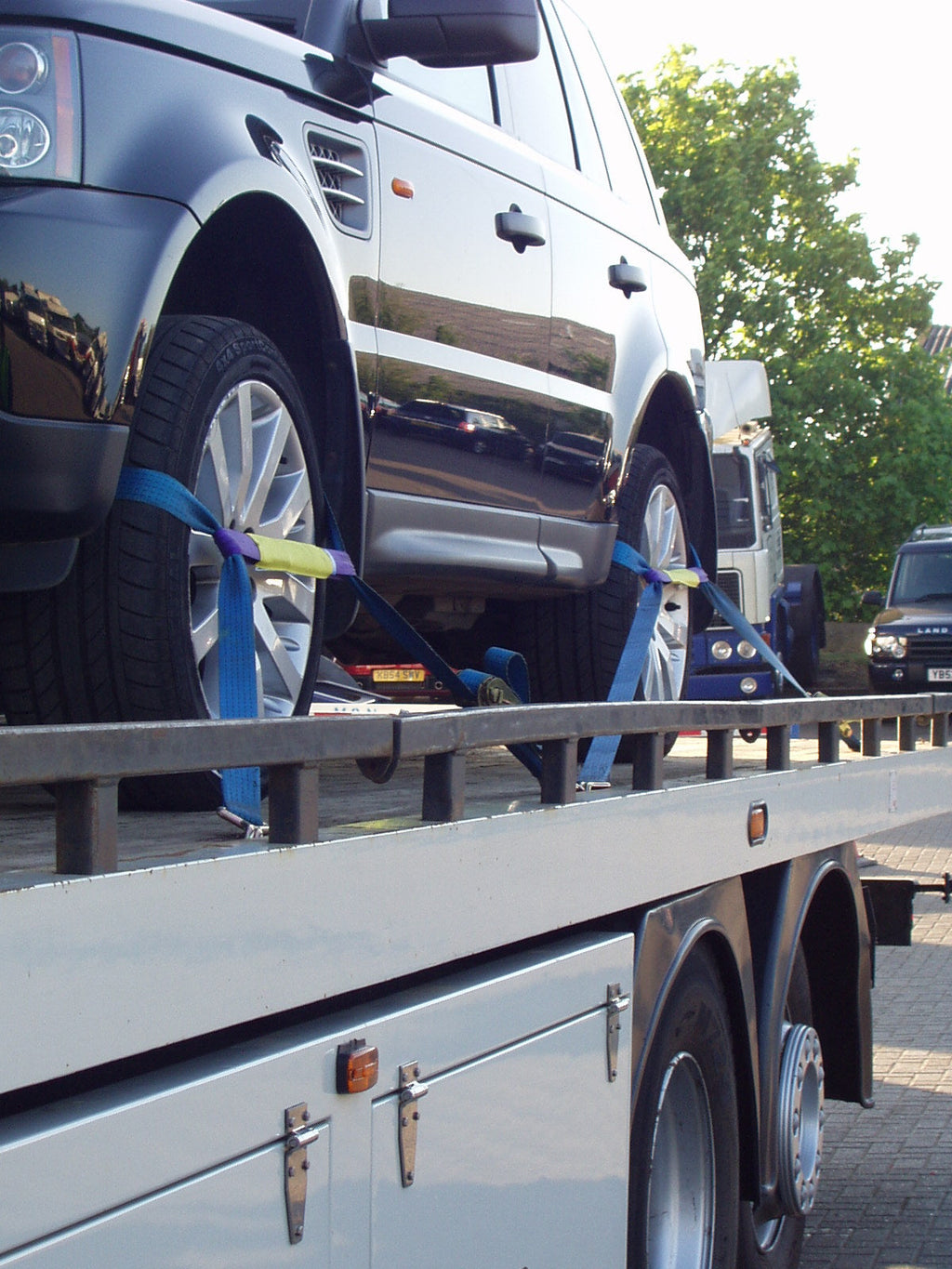
Polyester webbing straps are used for ‘non-lifting’ applications, primarily load restraint. For example, lashing down vehicles on the back of a truck, where the characteristics and weight/strength capabilities of the strap are totally different to lifting.
Polyester Properties
Polyester comes in many guises and numerous applications, but, for this blog, we are concentrating on its use as webbing straps for load restraint during vehicle/object movement, within the vehicle recovery, salvage and general construction sectors.
What are the key properties of polyester webbing straps? Here are a list of test results:
- Chemical name: Polyethylene Terephthalate
- Strength: Very high tenacity (Up to 10g/den)
- Elongation: up to 25% at break.
- Abrasion: excellent resistance to abrasion
- Moisture: has a very low regain of 0.4% making it feel damp very quickly.
- Temperature: the melting point is around 260°C and will withstand temperatures above 180°C for some time. Also very good in low temperatures, increasing in strength and reducing elongation.
- Fire retardant: Polyester webbing is difficult to ignite and tightly woven structures do not burn quickly.
- Sunlight exposure: Polyester has excellent resistance to sunlight.
- Chemical absorption: Polyester is resistant to most common chemicals.
Polyester webbing is commonly used because of its superior strength. It combines the benefits of nylon and polypropylene webbing to create a webbing that is strong enough to withstand heavy loads.
Its low water absorption means that it won’t stretch when it’s wet, and it won’t easily allow for the growth of mildew which is really important for webbing straps that are continually in use in all weathers, rain or shine.
Its high resistance to abrasion means that it can handle contact with non-smooth/damaged metal surfaces without fraying or coming apart. Ideal for tying down an accident damaged vehicle, for instance.
So, there you have it, that is a very impressive list of properties and what makes it by far the best material to use for your webbing straps!
Deciding what strap is right for the job.
The determining factor for webbing straps is the load type and load weight that is going to be restrained/lashed/tied-down. The standard in force which applies to load restraint is the British Standard BS EN 12195 Part 1 & 2 - Load Restraint assembles on road vehicles - Safety. Part 1 handles the Calculation of Lashing Force and Part 2 handles Web lashing made from man-made fibres
For more information on load securing read the Gov Publication Load Securing - Vehicle Operator - Guidance
The determining factors for webbing are the width of the material and the weight. These parameters are laid down by the Standard BS EN 12195. Unlike lifting slings, the colour of the polyester is not linked to its lifting tonnage capacity, for webbing straps the webbing can be ANY colour.
The addition of hardware, such as a hook or ratchet, once sewn into the strap, the load capacity of the strap will reduce. The lashing capacity is determined by the lowest component strength. For example, if the webbing is 7.5T, the hook is 5T and the webbing is stitched then the Minimum Break Load will be 5T.
Webbing Strap Labelling
Webbing straps do not need a certificate, however, they do need to carry a rating label showing the Lashing Capacity & the STF (Standard Tension Force) of the ratchet.
The BS EN12195 standard requires that weight & strength force are measured in daN. This is a dekaNewton. A simplified calculation is 1 daN = 10 Newton = 1 KGF. An example 5000 daN = 5000 kg = 5 tonne
Below is the information that appears on a webbing rating label:

Section B - this is the part of the label which is visible to the user. Section A - this part is sewn into the webbing strap itself.
ATTENTION: Although it is accepted practice to look for the number of lines sewn into the webbing and to workout the strength of the strap. For example, 5 lines in webbing equals 5 tonnes minimum break load. This is not always the case. Read the manufacturer's label sewn into the webbing strap!
Cardno & Polyester webbing straps
Cardno uses polyester webbing of a very high strength tenacity, that has an excellent resistance to abrasion, offers a good performance to low and high operating temperatures, is resistant to sunlight and to most chemicals.
All of our webbing straps used for load restraint and tie-down conform to BS EN 12195 standards, and our rating label, attached to every strap we manufacture, will reflect this.
See the Cardno Straps, Load Restraints & Tie Downs range on our website.
Contact us if you could do with some more advice. We’re always happy to help.
- Cardno Sales Team


